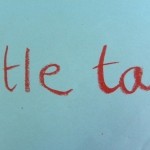
Writing Effective Web Content
Writing effective web content follows its own science and rules. It’s a unique type of writing that is different form every other style. If you can master this style of writing, your content will be well consumed.
What are the rules for writing effective web content?
Effective Web Content Rules
1. Write with Mobile in Mind
Mobile is the preferred format for web content consumption. You must design your content for mobile formats first, and the tablet and desktop versions will naturally follow. Mobile formats require smaller columns (see item #2), digestible paragraphs, and boiled down information that is well-summarized into headlines and subheadings.
2. Accommodate Your Column
Column width is very important when it comes to web content because a reader’s eyes can only go so far. You want to avoid having the reader feel like a pendulum losing their train of thought as they have to swing all the way back to the other side of the page. An ideal column width is approximately 13 words.
3. Funnel Your Information
Web content is read in a specific way. Users skim. Effective web content has concise and useful headlines and subheadings that funnel the information of the article into digestible phrases or words. Some users will only consume your funneled information, so focus less on being witty and more on being informative.
4. Create Visual Interest
Paragraph after paragraph of long text is challenging for a user to digest. You need to give your user incentive to continue reading or to scroll. Visual interest is key to satisfying and engaging your user with your content. Try breaking up your text with graphics that strongly relate to your content and main thesis (see item #5). These can include infographics, images, large quotes, or drawings.
5. Stick to One Thesis
Effective web content is focused. A user’s attention span is short and you are competing with all other content on the web. If your content doesn’t seem focused or organized, your user will not consume it. Stick with a single thesis, or main point, throughout the article. This should also be adhered to with your visuals.
6. Assist Your User
People who consume web content expect to be assisted. They are used to short paragraphs of 3 to 4 sentences, precise column widths, informative headings and subheads, and amazing visuals. All of these techniques assist your user in consuming your content. Without this, your user has to input more energy than they are accustomed to using when reading on the web. Help your user engage with your content to create a satisfying experience.
Overall, writing effective web content comes down to focusing on the user. Rather than focusing on what you would like to write or what information you need to get across, you must write web content with the user experience in mind.
A satisfying user experience will lead to greater consumption of your web content. These rules may stray from your natural writing style or current habits, but content based on these rules is what users expect to find on the web.
Web content should be extremely focused, concise, informative, and visually appealing. Your content needs to have all of these qualities in order to be effective and to create a satisfying experience for your user.



